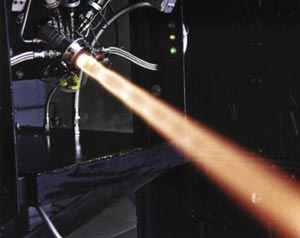 Every day – every single day, it seems – I see a note on Twitter, or get email, or hear someone on TV asking why we bother spending so much money on NASA. Billions of dollars! We should be spending that money right here on Earth!
Every day – every single day, it seems – I see a note on Twitter, or get email, or hear someone on TV asking why we bother spending so much money on NASA. Billions of dollars! We should be spending that money right here on Earth!
This argument is wrong in every conceivable way. Ignoring that we do spend that money here on Earth, ignoring that NASA’s budget is far less than 1% of the national budget, ignoring that the amount we spend on NASA in a year is less than we spend on air conditioning tents in Afghanistan, ignoring that we spend five times as much on tobacco in a year than we do on space exploration… this argument is still dead wrong.
Why?
Because when we invest in science, when we invest in space, when we invest in exploration, we always, always get far more back in return than we put in. And not just in dollars and cents.
See that picture above? It shows a new type of rocket engine design. Usually, fuel is pumped into a chamber where the chemicals ignite and are blown out the other end, creating thrust. The design pictured above does this in a new way: as the fuel is pumped into the chamber, it’s spun up, creating a vortex. This focuses the flow, keeping it closer to the center of the chamber. In this way, when the fuel ignites, it keeps the walls of the chamber cooler.
So what, right?
Here’s what: using this technology – developed for rockets for NASA, remember – engineers designed a way to pump water more quickly and efficiently for fire suppression. The result is nothing short of astonishing:
One series of tests using empty houses at Vandenberg Air Force Base compared [this new] system with a 20-gallon-per-minute, 1,400 pound-per-square-inch (psi) discharge capability (at the pump) versus a standard 100-gallon-per-minute, 125 psi standard hand line—the kind that typically takes a few firemen to control. The standard line extinguished a set fire in a living room in 1 minute and 45 seconds using 220 gallons of water. The [new] system extinguished an identical fire in 17.3 seconds using 13.6 gallons—with a hose requiring only one person to manage.
In other words, this new system put out a fire more quickly, using less water, and – critically – with fewer firefighters needed to operate the hose. This frees up needed firefighters to do other important tasks on the job, and therefore makes fighting fires faster and safer.
There is no way you could’ve predicted beforehand that investing in NASA would have led to the creation of this specific innovation in life-saving technology. But it’s a rock-solid guarantee that investing in science always leads to innovations that have far-ranging and critical benefits to our lives.
If for no other reason that’s why we need to invest in science: in NASA, in NSF, in NOAA, and all the other agencies that explore the world around us. It’s for our own good. And it always pays off.
[UPDATE: I should have noted that this technology was developed by Orbitec, a contractor with NASA and not NASA itself. The argument I make above still stands, though.]
Related Posts:
- What value space exploration?
- Debating space
- Why explore space?
Tip o’ the firefighter helmet to Michael Interbartolo.